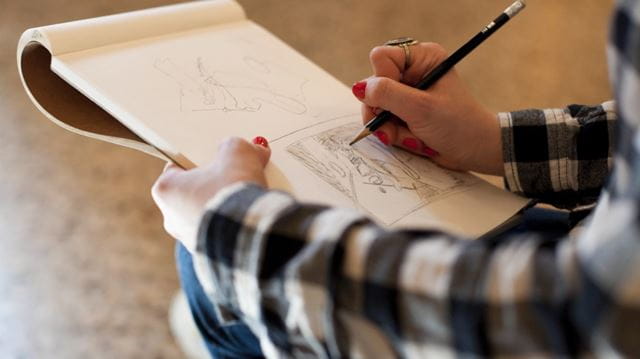
If you’re convinced that you’re incapable of sketching a decent picture, think again
It’s perfectly possible to learn how to draw at any age and it has benefits for your brain and your mental health, so why not give it a try? Here’s how to get started…
As children, almost all of us draw, so when you take up drawing in adulthood you aren’t so much learning a new skill as returning to one of your earliest forms of expression. This also means you can expect to pick up drawing from where you left off, so the first tentative sketches you make may well look like the efforts of a nervous 10-year-old.
Wherever you’re starting from, anybody with a will to do it can learn to draw. It’s a practical skill that can be taught and learned just like any other and, while it takes time to become confident and competent, the rewards are implicit in the process of learning. The focused and attentive observation that’s required will help you to slow down, becoming more appreciative of your chosen subjects, and you’ll see the familiar through fresh eyes. When you’re doing this, you’re existing in the moment, with all the benefits that brings.
Why it's never too late to start
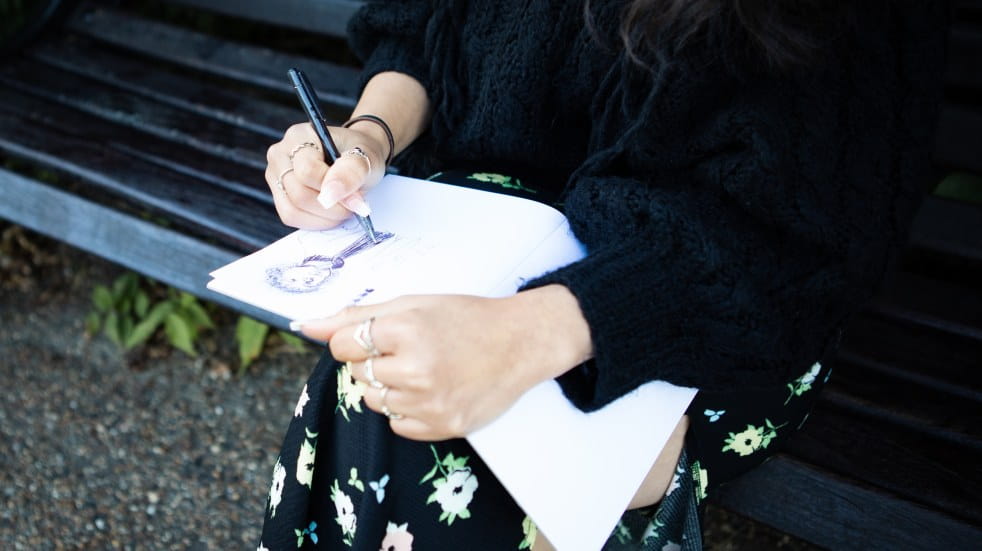
New arrivals at beginners’ drawing classes have often put off starting a course for years before some life change finally catalyses their decision to sign up. The barriers that hold people back from starting are often internal rather than external, and while it’s never too late to learn to draw, it can take time to reverse the years of self-criticism that stop prospective sketchers exploring their potential.
The mythology of the artist as an autonomous genius, producing one masterpiece after another in the closed system of the studio, has done a lot to perpetuate the idea that drawing requires natural talent that you either have, or don’t. But, while raw talent provides a springboard, all skill in the visual arts – painting, drawing, printmaking and sculpture – is hard won, and what we tend to perceive as talent in the work of more experienced artists owes more to hours of practice than to natural aptitude.
While mathematicians and professional athletes might peak young, life experience enriches the work of the artist – the great Maggi Hambling continues a relentless daily artistic practice at 76, and David Hockney, who will be 85 on 9 July, is still innovating. That’s not to say that we should all aspire to be the next Paula Rego (a Portuguese-British artist who was still painting at the age of 87), but the example of great living artists making work well beyond the expected point of retirement should serve to dispel the notion that an artistic aspiration you might hold has a ‘use by’ date.
A limited definition of drawing can also be restrictive when you’re starting out – doctors who sketch to explain pathologies and architects or engineers who spend decades making technical drawings often dismiss those daily practices as ‘not proper drawing’, despite evidence to the contrary. Even handwriting helps us to practise the dextrous skills required to make a drawing, so most of us already possess the fundamental skills we need to start drawing – we just need the structure to build upon those skills.
How to begin
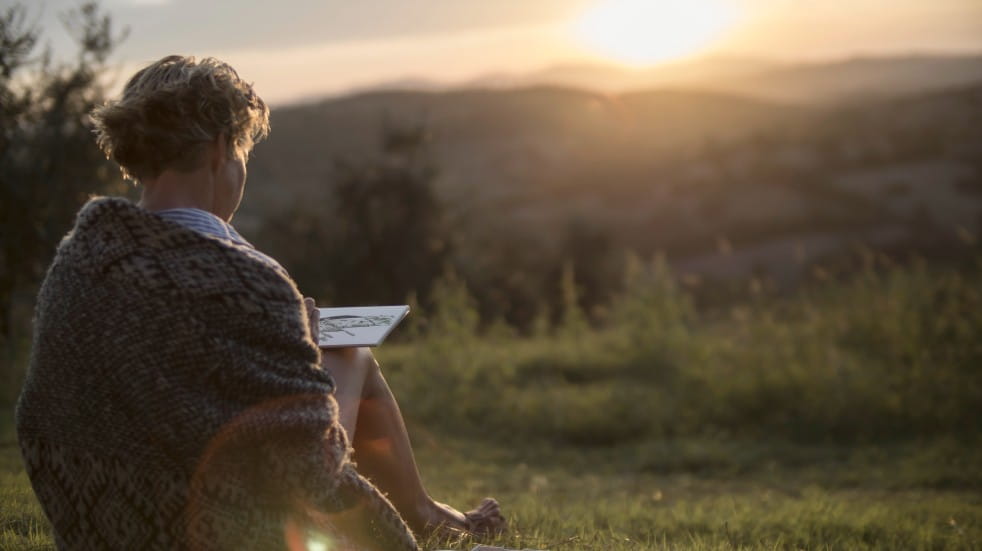
Begin by translating what you can see in front of you and copy the work of artists you admire and in this way, you learn to borrow from their ideas and draw the world around you from observation.
At first, learning to draw means learning to look, translating a curiosity about your chosen subject into tactile marks on a piece of paper. As you develop, you might rely on stock ‘phrases’ learned from books and YouTube videos, but repeated practice will help to embed your understanding of visual vocabulary deep enough that you can begin to respond authentically and articulate your ideas more confidently.
In a world where most people carry a camera in their pocket, you don’t need your drawings to be photographically accurate representations of a subject, but instead you should aim to make them honest and personal records of time spent looking at a subject, rendered with as much confidence as your ability allows.
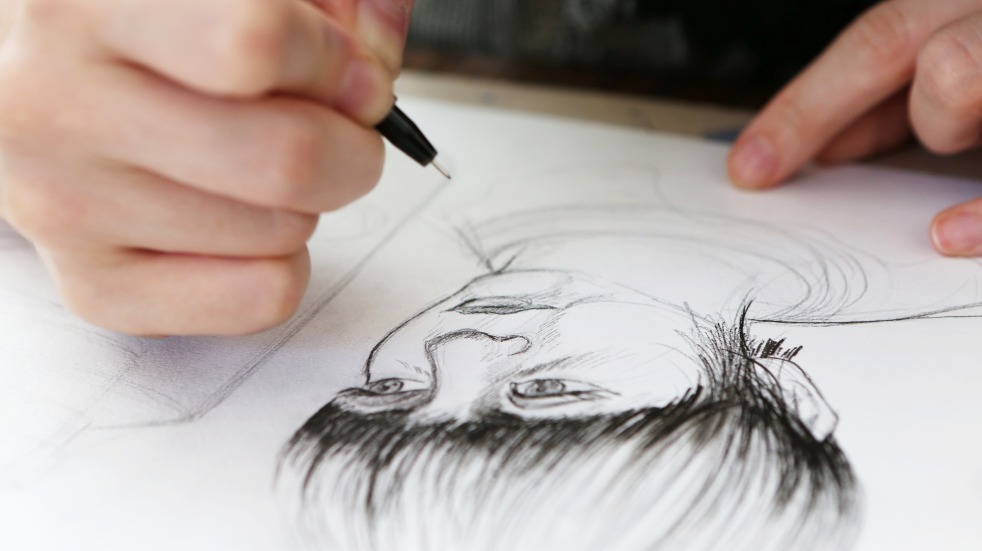
While you might make some drawings to give as gifts or to hang on a wall, most are valuable for the process they facilitate and the memories that they spark. Holiday snaps might remind you of how a view looked, but when you revisit a sketchbook of rudimentary drawings made on location, you’ll be transported back to the moment they were drawn.
Finally, drawing is a unifying act. Life-drawing classes and sketching groups bring people together with a shared challenge of recording a common subject in a visual way; and drawing provides a link between generations, creating a common thread of purpose between budding artists of all ages.
By drawing together, we create an opportunity to connect through a shared process that transcends boundaries of spoken language and generations, and make personal responses to a subject that are intrinsically valuable no matter how polished the outcome. Aside from the satisfaction of putting pencil to paper, it’s the power of drawing as the locus of a community that’s enchanted me over the years, and I hope it might captivate you, too.
Four ways to hone your skills…
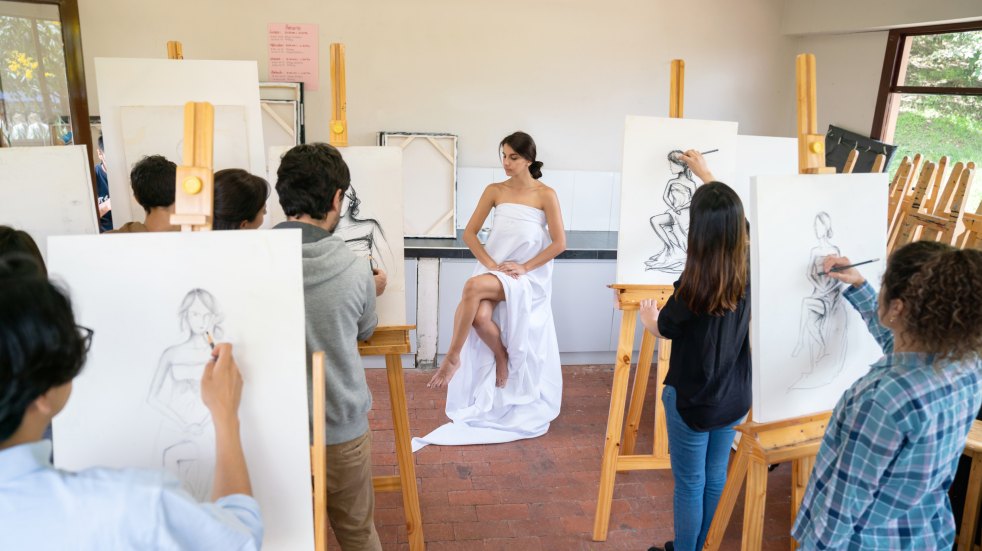
Kew virtual event
Kew Gardens offers a range of art courses and has teamed up with Boundless to create a virtual painting event exclusively for members. It will be the perfect opportunity to take your first steps in watercolours from the comfort of home.
Urban Sketchers
With local groups in cities and towns across the UK, the urban sketching movement offers a friendly and informal opportunity to meet up and draw around town with fellow sketchers of all abilities. You’ll find details of local groups through websites such as urbansketchers.org and sketchcrawl.com.
Local life class
Life drawing has seen a renaissance over the past decade, with groups popping up in village halls, pub function rooms and adult education centres across the country. They’re one of the best places to connect with a wider drawing community, with both tutored and untutored classes on offer.
Online drawing
If you can’t find a life drawing class near you or are looking for opportunities to draw from home, you might want to give online figure drawing a go. Groups such as Draw Brighton (draw-brighton.co.uk) run live-streamed online life classes and portrait sessions over Zoom, catering for an international community of artists.
Get the right kit for less than £40
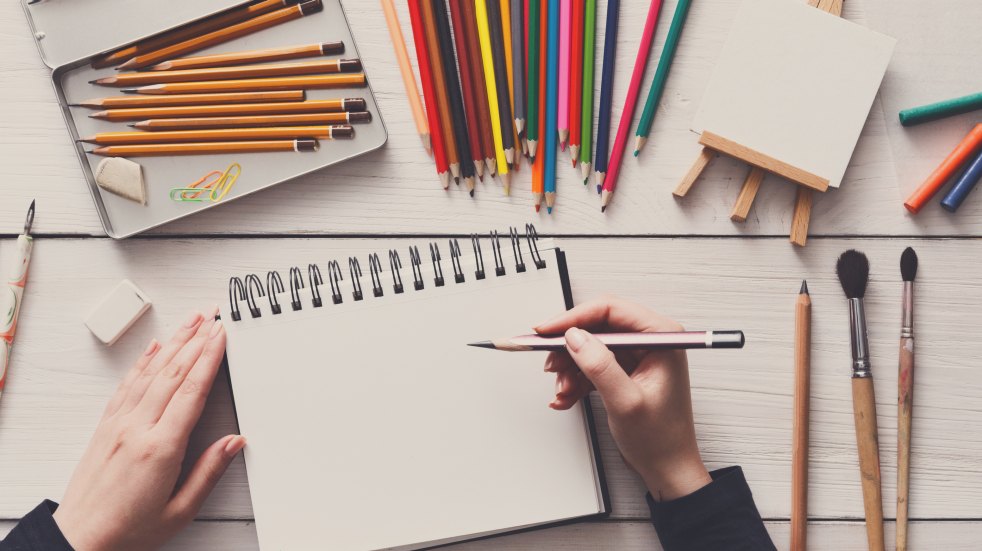
You can begin with a biro and paper, but good quality materials will improve your experience.
Sketching pencils
Six-pencil tin, £10.99. Even if you eventually find yourself veering into charcoal or ink, a set of graphite pencils is an essential part of any drawing kit. Stick to the softer ‘B’ grades for day-to-day sketching. This introductory set from Cumbria-based pencil manufacturers Derwent is a great place to start.
Guided sketchbook
You Will Be Able To Draw By The End Of This Book, £14.99. If you find a pad of blank paper a little intimidating, you might want to start with a guided sketchbook like my boldly titled book, which intersperses practical drawing exercises between blank spreads to practise on. I’m confident that the title is accurate...
Drawing board
Seawhite A3+ drawing board, £6.90. If you work on loose sheets of paper, a drawing board is an essential piece of kit, providing support for your paper and allowing you to create an angled drawing surface on your lap or a table edge. MDF guarantees a smooth surface, although plywood makes a great alternative.
Sharpener and eraser
Staedtler Mars plastic eraser and sharpener Set, £2.95. A good sharpener with a keen new blade is essential for keeping pencils in top drawing condition, while erasers are an invaluable tool for bringing light back into the dark of your pencil marks. Staedtler make both to a good standard at an affordable price.
Do more with Boundless
Join the free ‘Have a go at... Painting watercolours’ event on 27 September
Learn how to paint roses with Kew Gardens’ expert tutor Trevor Waugh. In this introductory online course, he’ll share helpful tips, and inspire you to think about painting in a new way. You can also rewatch the course as often as you like. boundless.co.uk/watercolours
To benefit from amazing offers, along with dozens of other deals on holidays, motoring services, experiences, shopping and more, join Boundless today. To find out how, visit our dedicated membership page.



